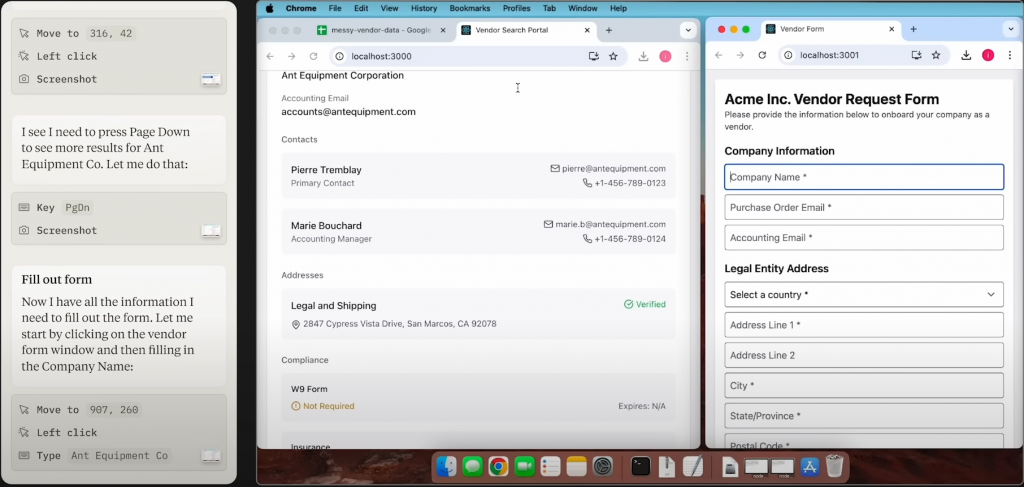
Back in the good old days (2 weeks ago) chatbots were confined to chat windows, only able to process and generate text. Those days are officially behind us. Anthropic’s latest innovation – “computer use” for Claude – is breaking down the barriers between AI and real-world computer interactions. This isn’t just another AI update; it’s a fundamental shift in how AI can interact with our digital world.
What is Computer Use?


Simply, Claude’s computer use capability is exactly what it sounds like – the ability for AI to interact with computers just like humans do. This means moving cursors, clicking buttons, typing in fields, and navigating through websites and applications. But it’s more than just mimicking human actions; it’s about bringing AI’s automation capabilities into the realm of everyday computer operations.
Think of it as giving Claude hands to work with. Instead of just telling you how to do something, it can now do it itself.
Why This Changes Everything
The introduction of computer use addresses the “last mile problem” in AI automation. Here’s what we mean:
Traditional AI workflows often look something like this:
- AI analyzes the task and generates a plan
- AI processes the information, or performs tasks within a development setting
- Human needs to step in to actually execute the actions
With computer use, that final human intervention is often no longer necessary. The AI can now complete the entire workflow from start to finish.
Just have a look at what it can do when we ask it to find our “About Us” page and generate a summary:
Real-World Applications
Let’s dive into some concrete examples of how businesses are already putting this feature to work:
This isn’t just macro recording or simple automation – it’s intelligent interaction that can adapt to changing situations and handle complex decision trees.
Implementation Considerations
While computer use opens up exciting new possibilities, successful implementation requires careful consideration. Security and access management need to be at the forefront of any deployment strategy. These models can interact directly with computer systems, making them potentially attractive targets for bad actors – so proper security protocols aren’t just nice-to-have, they’re essential.
Before diving into computer use, it’s worth considering if simpler solutions could be enough. While computer-use is powerful for those last-mile automation challenges we discussed earlier, traditional API integrations or simpler automation tools often provide more cost-effective solutions. Computer use shines brightest when these conventional approaches fall short – like with UI testing or sophisticated web scraping where direct interaction is unavoidable.
Lastly, while computer-use highlights the continued acceleration of Gen AI and conversational chatbots – it should be noted that the API costs currently are very pricey (3$ for 1 million tokens). Hence, it should be implemented wisely. When evaluating the financial implications, look beyond the immediate API costs. Consider the full picture: the time currently spent on manual processes, how expensive a mistake could be, and the long-term productivity gains you expect to achieve. This holistic view will give you a more accurate understanding of the potential return on investment and unexpected costs.
What’s next
Want to know how you could directly apply computer use in your AI systems? Look no further, contact us now and we can point you in the right direction.



